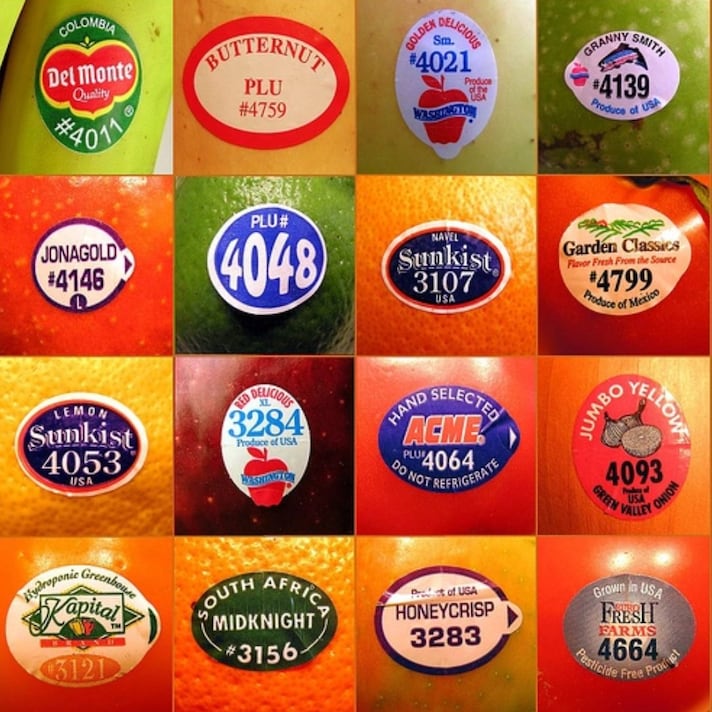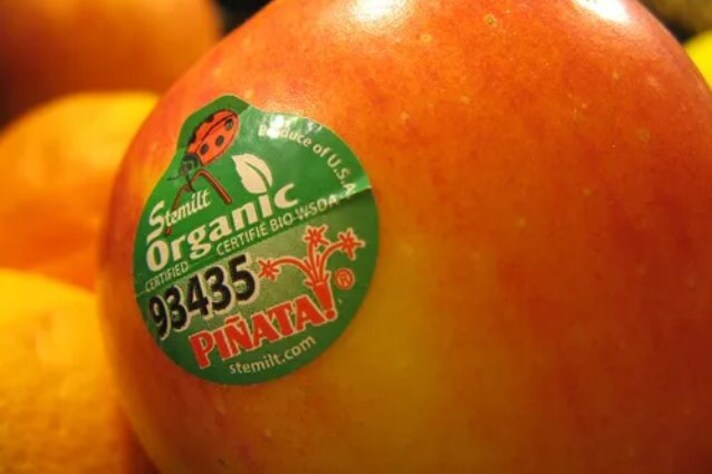How to Identify and Decipher Those Little Numbers on Stickers Put on Produce at The Grocery Store
Those little stickers on your produce aren’t just for scanning at checkout—they hold key information about how your food was grown. PLU codes reveal whether your fruits and vegetables are organic, conventionally farmed, or even genetically modified. Knowing how to decode them can help you make smarter grocery choices: read ahead to find out all about them!

If you’ve ever grabbed an apple at the grocery store, chances are you’ve seen those little stickers slapped onto your produce. They’re easy to ignore, maybe even a little annoying when you have to peel them off, but they’re more than just barcodes for the cashier to scan. Those tiny number sequences actually hold important information about how your fruit and vegetables were grown—and knowing how to read them can help you make better choices for your health, your wallet, and even the environment.
Who Came Up with These Codes, and Why?
Believe it or not, these little stickers aren’t random. They’re part of an internationally recognized system known as PLU codes (Price Look-Up codes), established by the International Federation for Produce Standards (IFPS) back in the 1990s. Their main purpose? To help grocery stores identify fruits and vegetables quickly at checkout, track inventory, and differentiate between conventionally grown, organic, and genetically modified (GMO) produce. While they might seem like just a nuisance, these stickers serve a real purpose beyond the cash register.

The Secret Language of Produce Stickers
Here’s where things get interesting: the numbers on those little stickers actually tell you how your produce was grown. While it might seem like a random assortment of digits, there’s a system to it. Once you crack the code, you’ll never look at a banana the same way again.
- A four-digit code (usually starting with 3 or 4): This means the produce was grown conventionally—aka with chemical pesticides and fertilizers. It’s the standard method for most grocery store produce.
- A five-digit code beginning with 9: This is the golden ticket for those looking for organic produce. The "9" at the beginning means the fruit or vegetable was grown without synthetic pesticides, fertilizers, or genetically modified organisms (GMOs).
- A five-digit code beginning with 8: This used to indicate that the produce was genetically modified (GMO). However, because of consumer pushback and lack of mandatory labeling, this is rarely used anymore. Most GMOs are now hidden under conventional four-digit codes.
Which Codes to Look For—and Which to Avoid
If organic produce is important to you, you’ll want to scan for five-digit codes starting with 9. These indicate that your apples, carrots, or tomatoes were grown without synthetic chemicals or genetic modification. However, if you’re trying to dodge GMOs, it’s a little trickier. Since produce companies no longer consistently label them with an "8," you can’t always tell if something has been genetically modified just by looking at the sticker. For now, your best bet is to look for organic labels, since GMOs are not allowed in certified organic produce.

On the flip side, four-digit codes (starting with 3 or 4) are the most common and indicate conventionally grown produce. While there’s nothing inherently wrong with them, they do mean that your produce was grown using chemical pesticides and fertilizers, something to consider if you’re trying to eat cleaner.
Are These Stickers Even Safe to Eat?
In case you’ve ever taken a big bite of an apple and realized—too late—that you forgot to peel off the sticker, don’t panic. Produce stickers are technically food-safe but not exactly edible. They’re made from plastic or paper with FDA-approved adhesive, meaning they won’t poison you, but they won’t do your digestive system any favors either. Best to peel them off before snacking.
;Resize,width=767;)

;Resize,width=712;)

